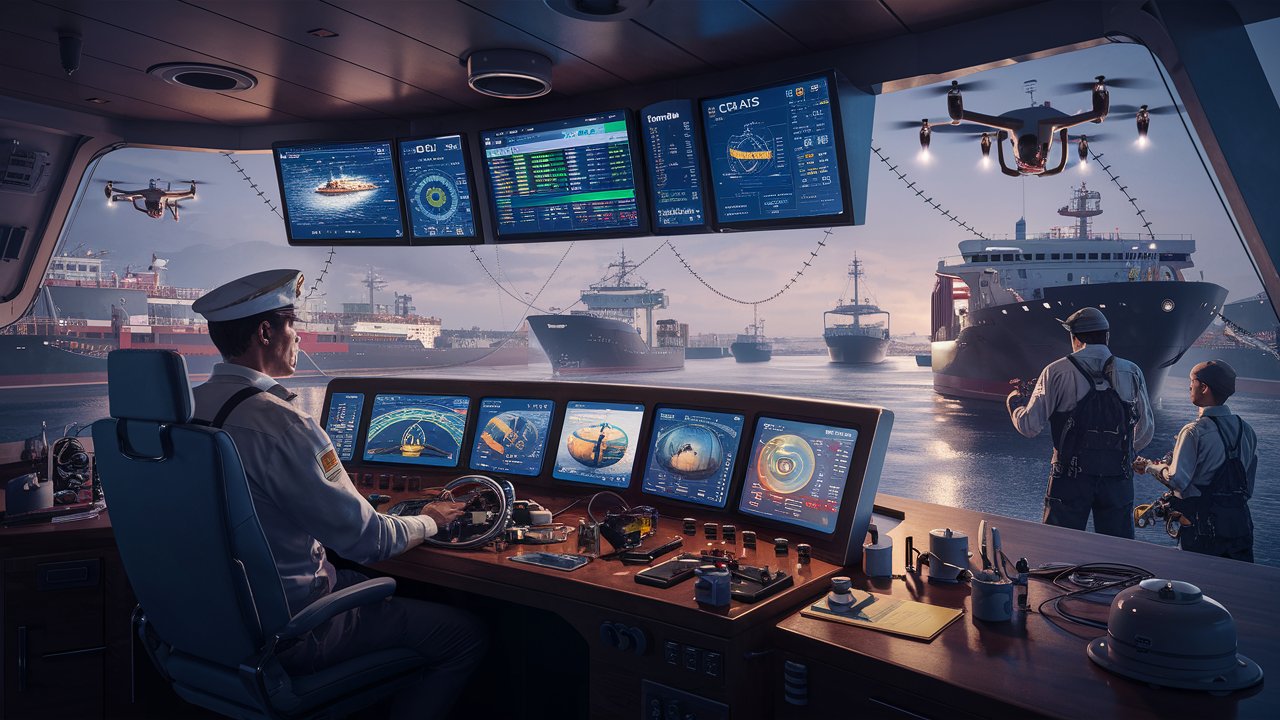Table of Contents
Evolution of Maritime Technologies:

Maritime Technologies Complex Throughout human history, the growth of sea tools shows our long desire to explore and make new things. From old times to now, making better sea tools has been a journey of smart thinking and change.
Early Navigation Tools and Techniques:
In ancient times, sailors used basic tools like astrolabes, compasses, and stars to travel across oceans. These simple yet clever methods paved the way for later advancements in sea technology Maritime Technologies Complex.
Impact of Industrial Revolution on Maritime Technology:
The start of the Industrial Revolution in the 1700s and 1800s changed how ships worked. Steam engines were invented, which made ships move using steam instead of wind. This made ships faster and better at carrying things. It also made it easier for countries to trade with each other a lot more than before.
Modern Advancements in Ship Design and Navigation Systems:
In today’s world of Maritime Technologies Complex, quick improvements in tech have made ships better. They have smooth designs that help them move well in water. They also have fancy GPS and satellite systems to help them find their way accurately. All these cool gadgets make ships safer and more efficient when they’re out at sea.
How have maritime technologies evolved to meet the demands of the industry?
Maritime tech has changed a lot to match what the industry needs. It has to deal with things like everyone being connected, taking care of the environment, and making sure ships are safe. By using new ideas and the latest tech, the maritime industry keeps finding new ways to do things on the ocean.
Examples/Case Studies:
Switching from sail to steam-powered ships was a big deal in maritime history. It started a whole new era in how things were moved across the sea. Also, using GPS technology changed how sailors found their way to the ocean. It made things much more accurate and reliable. These examples show how new technology has really changed the maritime industry over time. Get More Info on maritime technologies complex.
Integration of Digital Solutions in Maritime Operations:

In today’s digital age, the Maritime Technologies Complex industry is using fancy tech to make things better on the ocean. They’re using things like electronic maps and systems that show information (ECDIS) and automatic systems that identify ships (AIS). These digital solutions are changing everything about how things are done at sea, making them easier and safer.
Electronic Chart Display and Information Systems (ECDIS):
ECDIS is a big deal in maritime navigation, swapping old paper charts for electronic ones. It gives sailors up-to-date navigation info, helps plan routes, and avoids crashes. This makes it easier for them to know what’s going on and stay safe while navigating.
Automatic Identification Systems (AIS) for Vessel Tracking:
AIS helps ships and land-based authorities easily know and track ships in real time. By sharing important info like a ship’s identity, position, and direction, AIS makes maritime travel safer and more secure, reducing the chances of crashes and accidents.
Use of Drones and Remote-Operated Vehicles (ROVs) for Underwater Inspections:
Drones and ROVs are becoming more common for checking underwater stuff in the maritime industry. These flying and underwater machines let people watch over ships, offshore setups, and underwater buildings from far away, so they don’t have to spend a lot of time and money doing inspections by hand.
How are digital solutions revolutionizing maritime operations?

New digital stuff is making maritime work way better by giving instant data, making people more aware of what’s happening, and doing regular jobs on their own. By using things like ECDIS, AIS, and drones, the maritime industry can make work smoother, keep things safer, and use resources better in a world that’s getting busier and more competitive.
Examples/Case Studies:
Using ECDIS has really helped shipping companies all over the world make navigating safer and smoother. Also, using ROVs for underwater inspections has let oil and gas companies do regular maintenance and repairs more precisely and cheaply. These examples show how digital stuff has really changed how things are done at sea in the 21st century.
Maritime Safety and Security Technologies:
Maritime Technologies Complex Safety and security are paramount concerns in the maritime industry, where human lives and valuable assets are at stake. Advanced radar systems, satellite communication, and surveillance technologies play a crucial role in safeguarding maritime assets and personnel, ensuring smooth and secure operations in an ever-changing environment.
Advanced Radar Systems and Collision Avoidance Technologies:
Radar systems equipped with advanced signal processing capabilities enable early detection of potential hazards such as other vessels, navigational obstacles, and adverse weather conditions. Collision avoidance technologies utilize radar data, AIS, and predictive algorithms to calculate safe navigation routes and prevent collisions at sea.
Use of Satellite Communication for Distress Signals and Emergency Response:

Satellite communication systems provide reliable and global coverage for maritime distress signals and emergency communication. In the event of an emergency, distress calls can be transmitted via satellite to rescue coordination centers, enabling swift and coordinated response efforts to save lives and mitigate potential disasters.
Maritime Surveillance and Monitoring Systems:
Maritime surveillance and monitoring systems utilize a combination of radar, sonar, and satellite imagery to monitor vessel traffic, detect suspicious activities, and enforce maritime regulations in coastal waters and exclusive economic zones. These systems enhance maritime domain awareness and enable authorities to respond proactively to security threats and illegal activities at sea.
How do safety and security technologies protect maritime assets and personnel?
Safety and security technologies protect maritime assets and personnel by providing early warning of potential threats, facilitating timely response to emergencies, and deterring criminal activities such as piracy, smuggling, and illegal fishing. By enhancing situational awareness and communication capabilities, these technologies contribute to safer and more secure maritime operations.
Examples/Case Studies:
The implementation of long-range identification and tracking (LRIT) systems has significantly enhanced maritime domain awareness and security by enabling authorities to monitor vessel movements and detect suspicious activities in real time. Furthermore, successful rescue operations using advanced communication systems have demonstrated the lifesaving potential of satellite-based distress signaling and emergency response mechanisms. These examples illustrate the critical role of safety and security technologies in protecting maritime assets and personnel in today’s dynamic and challenging maritime environment.
Final Thoughts:
Maritime Technologies Complex As we wrap up our look at maritime tech, it’s clear that the future of the maritime industry is all about new tech. From old sailors who used stars to guide them to today’s sailors who rely on digital stuff for safety, maritime tech shows how people always want to move forward and learn new things.
Looking ahead, there are so many chances for new ideas in the maritime world. New tech like artificial intelligence, blockchain, and renewable energy could change everything about how ships work, from finding their way to staying safe and taking care of the environment. By using these new ideas and working together across borders, the Maritime Technologies Complex industry can find new ways to grow, work better, and take care of the planet.
FAQs:
What is the Maritime Technologies Complex?
The Maritime Technologies Complex is a state-of-the-art facility dedicated to research, development, and innovation in maritime technology.
Where is the Maritime Technologies Complex located?
The complex is situated in [location], serving as a hub for maritime engineering advancements.
Who can utilize the facilities at the Maritime Technologies Complex?
Researchers, engineers, and industry professionals can access the complex for collaborative projects and testing of maritime technologies.
What resources are available at the Maritime Technologies Complex?
The complex offers cutting-edge laboratories, simulation facilities, and expert support for exploring and advancing maritime technologies.




